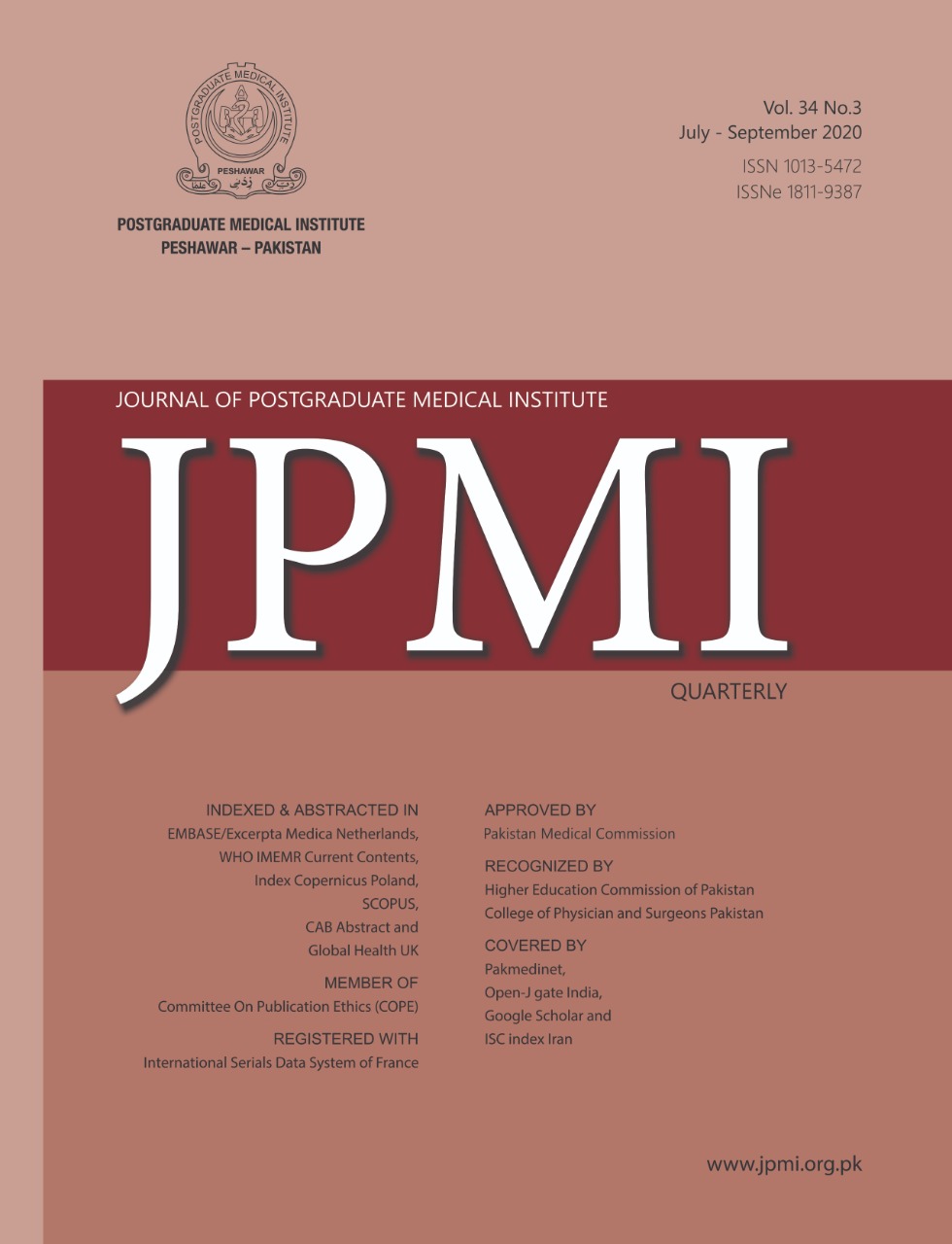NON-PHARMACOLOGICAL INTERVENTIONS FOR TREATING SYMPTOMS OF KNEE OSTEOARTHRITIS IN OVERWEIGHT OR OBESE PATIENTS; A REVIEW
Main Article Content
Abstract
Objective: To explore the current literature on the effects of non pharmacological interventions on weight reduction, knee pain and function in patients with knee osteoarthritis who are overweight or obese.
Methodology: Three databases; Web of Science, PubMed Central and ScienceDirect were searched using Preferred Reporting Items for Systematic Reviews and Meta-Analyses (PRISMA) guidelines. The search terms used were "overweight and obese knee OA Patients, Treatment, Strengthening exercises, Range of motion exercises, High intensity exercises or Mobile health (mHealth)". Only articles written in English language and published in peer reviewed journals from August, 2008 to September, 2018 were searched. Out of 2838 articles identified, only 10 were considered relevant.
Results: The most effective intervention that showed improvement of knee pain and function was strengthening exercise. The two most effective interventions for weight reduction, among patients with knee osteoarthritis who were overweight or obese, were caloric restriction alone and diet intervention combined with the exercise program. Dietary intervention alone also reported a loss of fat significantly, when compared to exercise group.
Conclusion: Strengthening exercise played a vital role in relieving knee pain and improving function. A caloric restriction diet was found helpful in reducing weight. Combination of diet and exercise was found effective in reducing weight and improving knee pain.
Article Details
Work published in JPMI is licensed under a
Creative Commons Attribution-NonCommercial 2.0 Generic License.
Authors are permitted and encouraged to post their work online (e.g., in institutional repositories or on their website) prior to and during the submission process, as it can lead to productive exchanges, as well as earlier and greater citation of published work.


